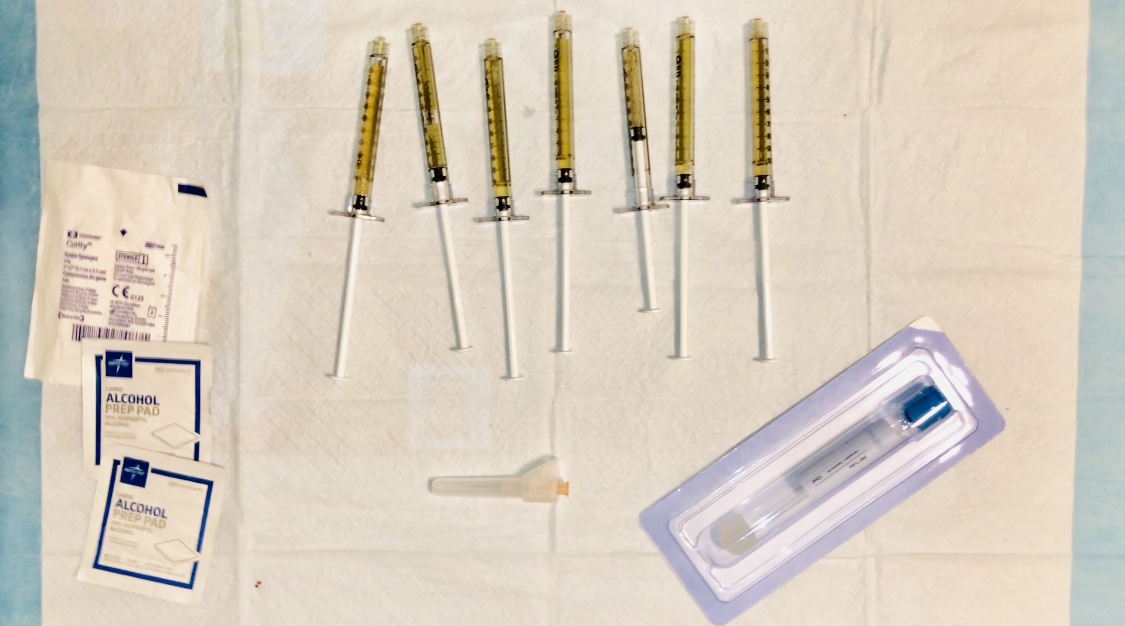The purpose of this study from the American Journal of Sports Medicine was to compare the long-term clinical outcomes provided by intra-articular injections of either PRP or hyaluronic acid (HA) to treat knee degenerative disease.
The results? Both treatments were effective in improving knee functional status and symptoms over time. PRP did not provide an overall superior clinical improvement compared with HA in terms of either symptomatic-functional improvement at different follow-up points or effect duration.
For more info on the methods and results of this study, please reference it below.
Background:
Platelet-rich plasma (PRP) injections have been proposed as a new conservative option for knee degeneration to provide symptomatic relief and delay surgical intervention. Although the current literature provides some evidence on the benefits of this technique compared with viscosupplementation, no studies have been performed to compare their long-term effects.
Purpose:
To compare the long-term clinical outcomes provided by intra-articular injections of either PRP or hyaluronic acid (HA) to treat knee degenerative disease.
Study Design:
Randomized controlled trial; Level of evidence, 1.
Methods:
Patients with a history of chronic symptomatic knee degenerative changes and osteoarthritis (Kellgren-Lawrence grade 0-3) were enrolled: 192 patients were randomized to undergo 3 blinded weekly intra-articular injections of either PRP or HA. Patients were prospectively evaluated before the injection and then at 2, 6, 12, and 24 months and a mean of 64.3 months (SD, 7.8 months) of follow-up. Evaluation was based on International Knee Documentation Committee (IKDC) subjective (main outcome), EuroQol visual analog scale, and Tegner scores; 167 patients reached the final evaluation.
Results:
Both treatments were effective in improving knee functional status and symptoms over time: Mean ± SD IKDC subjective score improved significantly for both PRP and HA groups (P < .0005) and remained stable over time up to 24 months (from 53.3 ± 14.3 to 67.3 ± 18.1 and from 50.3 ± 13.2 to 62.1 ± 20.8 for PRP and HA groups, respectively). At final evaluation, a significant IKDC reduction was observed in both treatment groups, with the PRP group still presenting significantly higher values compared with baseline: PRP 60.5 ± 19.0 (P < .001 vs baseline), HA 55.7 ± 18.8 (not significant vs baseline). A comparative analysis showed no significant intergroup difference in any of the clinical scores at any follow-up point. The median duration of patient subjective perception of symptomatic relief was 9 months for HA and 12 months for PRP (not significant). The only significant difference was observed in the rate of reintervention at 24 months, which was significantly lower in the PRP group (22.6% vs 37.1%, P = .036).
Conclusion:
Both treatments were effective in improving knee functional status and symptoms over time. PRP did not provide an overall superior clinical improvement compared with HA in terms of either symptomatic-functional improvement at different follow-up points or effect duration.
Registration:
NCT01670578 (ClinicalTrials.gov identifier).



